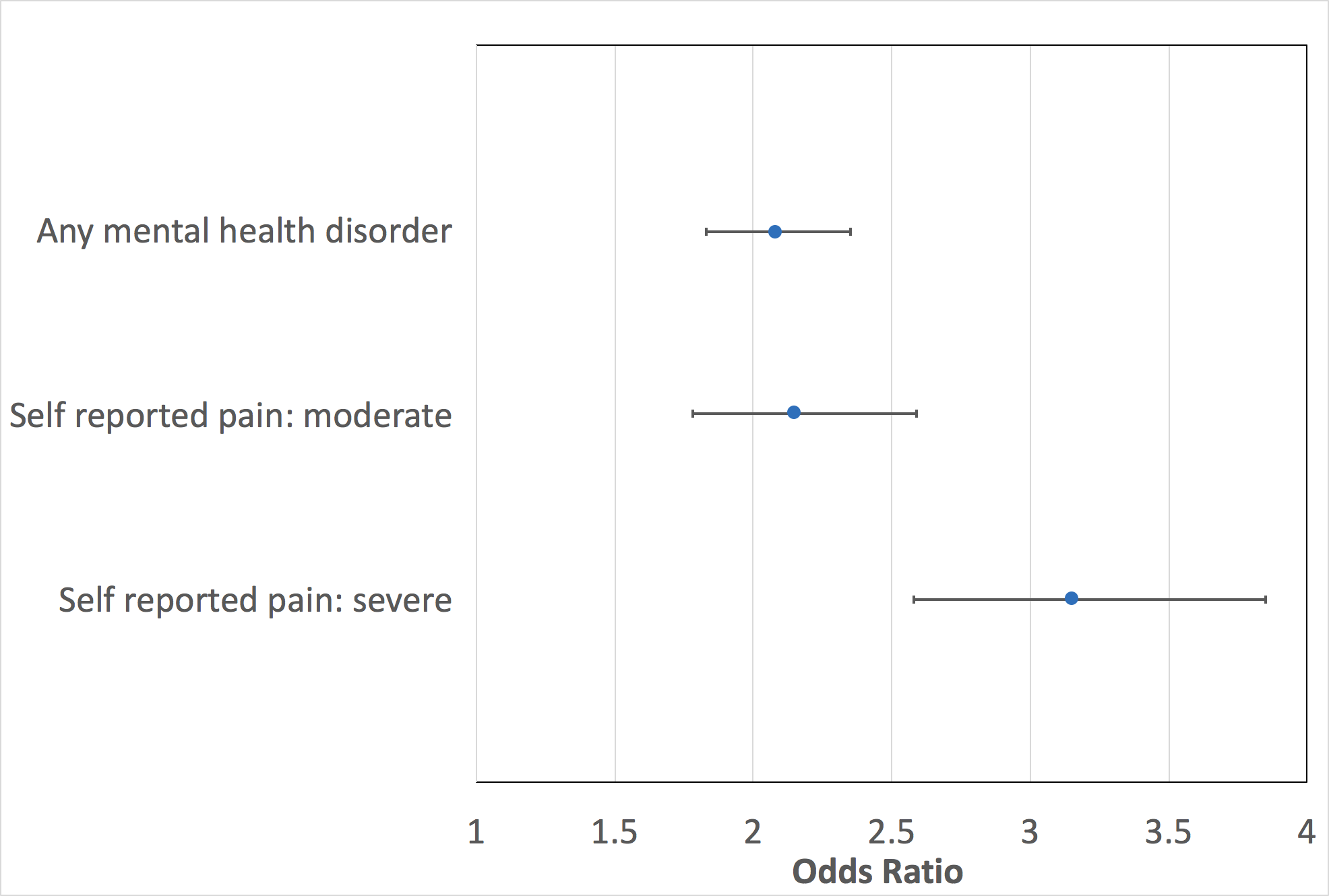Prescription opioid misuse has become a national crisis in the United States, impacting an estimated 2 million Americans in 2015. For some individuals, using a doctor-prescribed opioid to treat pain symptoms can lead to dependence and even death. A 2017 study by Matthew Davis, Lewei Lin, Haiyin Liu, and Brian Sites examined the relationship between mental health disorders and prescription opioid use. This week, STASH reviews their work.
What was the research question?
Are individuals with mental health disorders more likely to receive prescription opioids for pain than individuals without mental health disorders?
What did the researchers do?
The researchers used data from the 2011 and 2013 Medical Expenditure Panel Survey (MEPS), a survey that provides nationally-representative data of noninstitutionalized U.S. adults. The survey takes information from individuals about their prescription medications and cross-references it with information supplied by pharmacies. The survey also collects information from individuals about their medical and mental health diagnoses, and asks them to rate their overall health and levels of pain. The researchers used chi-square tests to compare the proportion of individuals receiving opioids between those with mental health disorders (n = 12,690) and those without (n = 44,891). They then used logit models to examine this relationship and create odds ratios.
What did they find?
Among adults with mental health disorders, 18.7% had filled at least two opioid prescriptions during a calendar year, compared to only 5.0% of adults without mental health disorders – a difference that is statistically significant. Based on this observation, the researchers estimate that adults with mental health disorders–who Davis and colleagues estimate represent an estimated 16.2% of the population–receive 51.4% of all opioid prescriptions distributed each year, and are twice as likely to have filled at least two opioid prescriptions during a year than adults without mental health disorders. This difference holds true even when you break down the population by the level of pain that they report and whether they have particular medical diagnoses, such as cancer and musculoskeletal conditions including arthritis.
Figure. Adjusted odds ratios for prescription opioid use for individuals with mental health disorders compared to those without mental health disorders among noninstitutionalized adults in the United States. The blue dot indicates the adjusted odds ratio and the bars represent the 95% confidence interval. An odds ratio greater than one suggests higher odds of prescription opioid use among those with mental health disorders. Adjusted odds ratios factor in sociodemographic factors, health status, and use of health services. Adapted from Davis, Lin, Liu, & Sites (2017). Click image to enlarge.
Why do these findings matter?
The syndrome model of addiction suggests that exposure to an object of addiction is a necessary factor in determining whether an individual develops an addiction to that particular object. Previous research indicates that individuals with mental health disorders may be more vulnerable to developing addictions. Additionally, Davis and his colleagues point to literature indicating that having a mental health disorder is associated with a greater risk of opioid overdose. Therefore, understanding whether this population is systematically more likely to be exposed to opioids is important for doctors to develop evidence-based guidelines for treating and managing pain symptoms among people with mental health disorders.
Every study has limitations. What are the limitations in this study?
This study used cross-sectional data so it’s not possible to determine the direction of causality in the relationship between having a mental health disorder and using prescription opioids from this data. It might be that individuals with mental health disorders are more likely to be prescribed opioids for their pain, or individuals using prescription opioids are more likely to be diagnosed with a mental health disorder. Davis and colleagues point out, however, that other research suggests mental health disorders frequently precede prescription opioid use.
For more information:
If you or a loved one are concerned about substance abuse or addiction, anonymous resources are available for free on our Addiction Resources page.
— Rhiannon Chou Wiley
What do you think? Please use the comment link below to provide feedback on this article.





